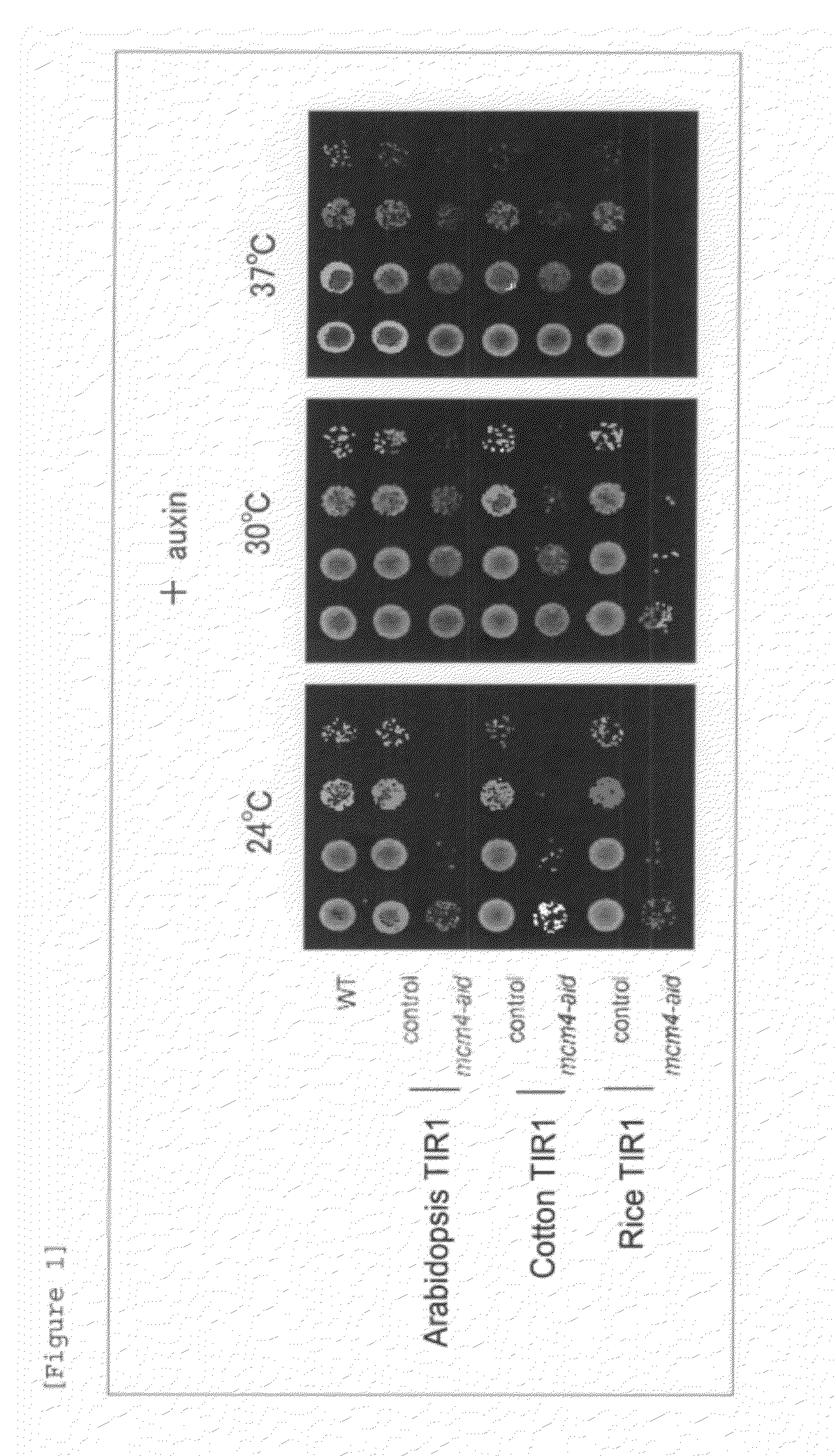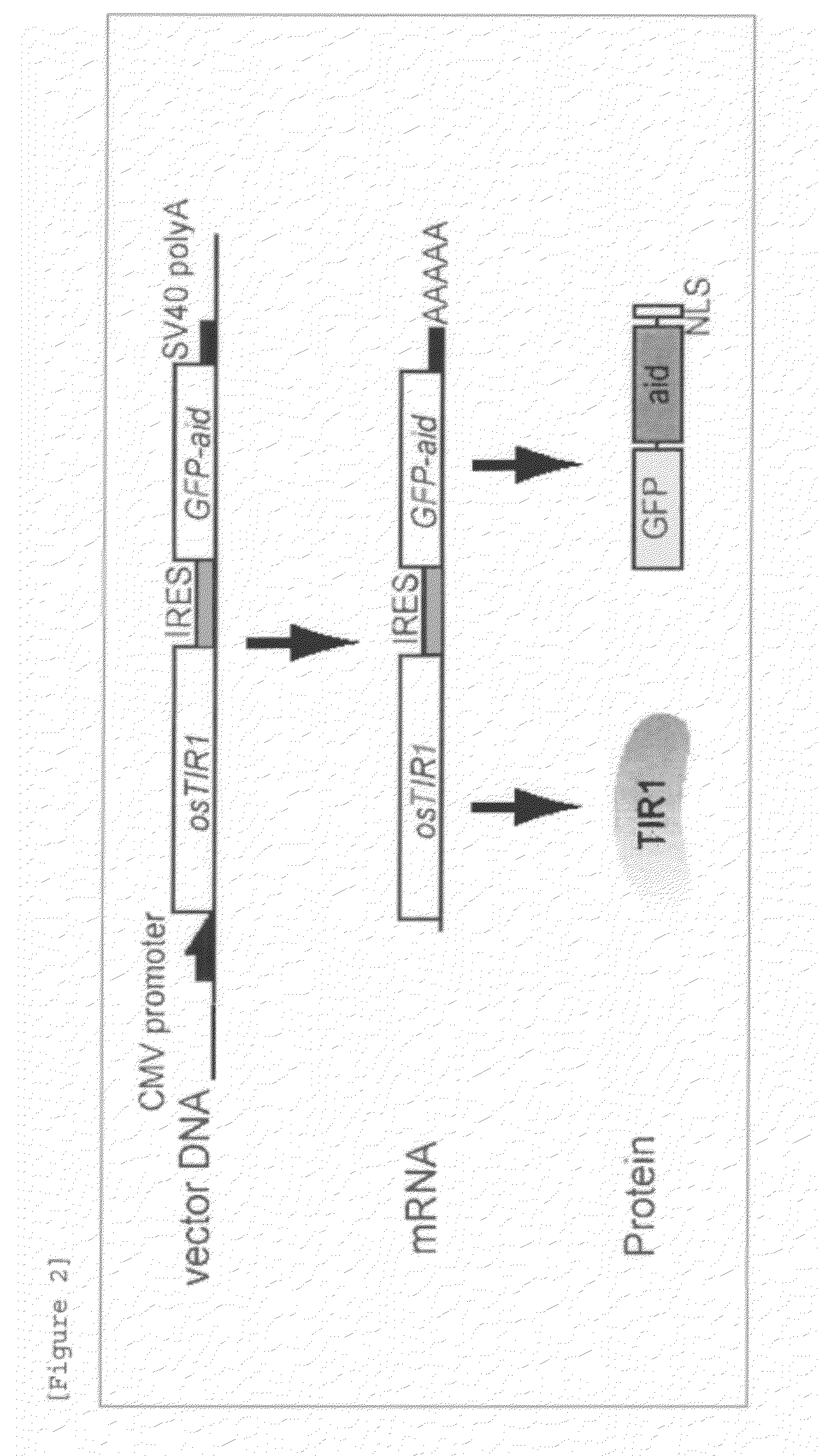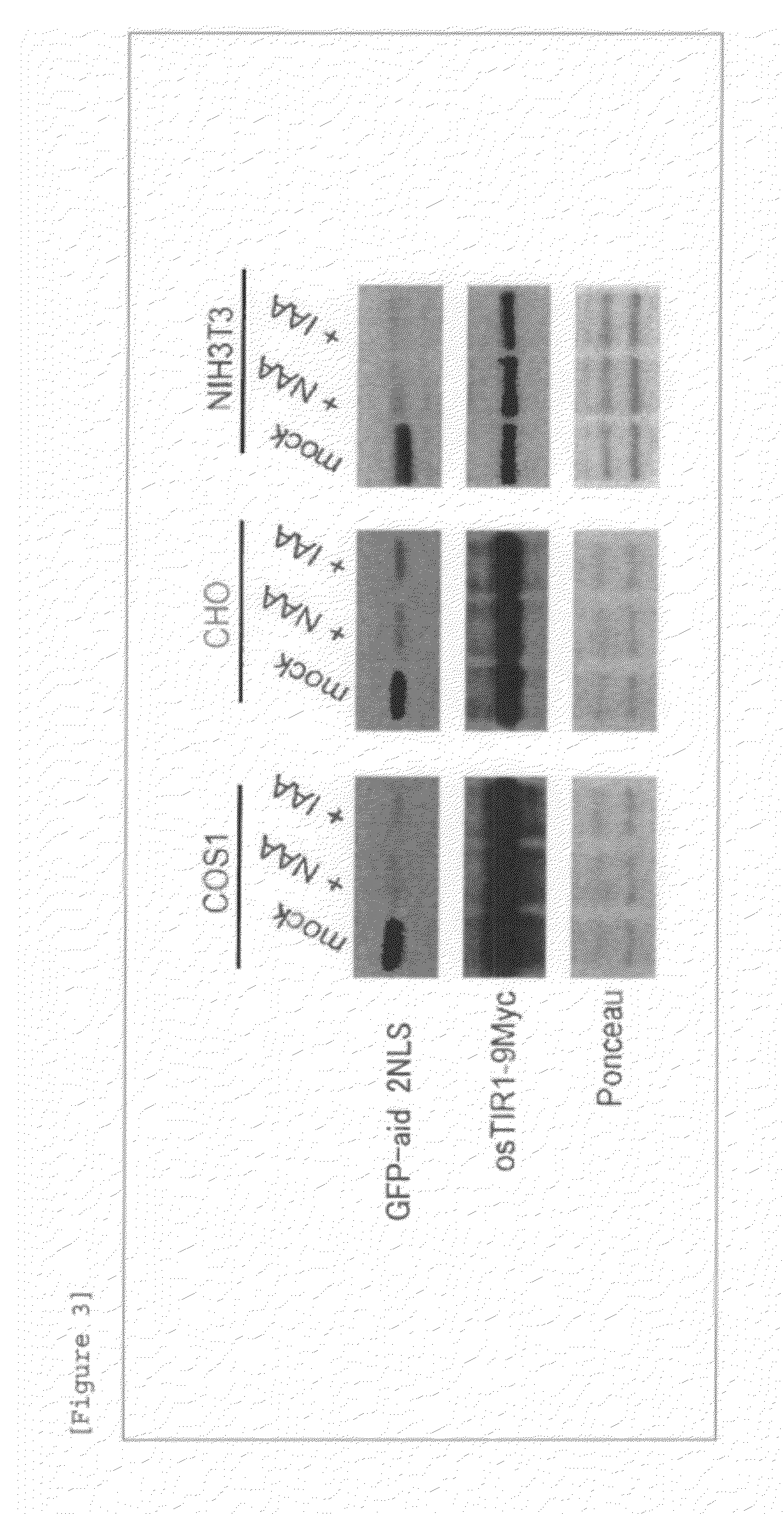Method for inducing degradation of protein in mammalian cell
a technology of protein degradation and mammalian cells, which is applied in the direction of peptide sources, bio chemistry apparatus and processes, etc., can solve the problems of reducing the expression level, affecting the effect of reaction reaction, and taking a long time to deplete the actual protein
- Summary
- Abstract
- Description
- Claims
- Application Information
AI Technical Summary
Benefits of technology
Problems solved by technology
Method used
Image
Examples
reference example 1
1. Production of a Budding Yeast Strain
[0062]EGFP was determined as the protein to be degraded, and a budding yeast strain which degrades EGFP by the addition of NAA was produced. It is to be noted the promoter sequence and the gene sequence of the budding yeast used are registered in the SGD web site, which is http: / / www.yeastgenome.org / .
(1) Arabidopsis TIR1-Expressing Yeast Strain (YNK2)
[0063]After cleaving a pRS306-GAL plasmid vector with SalI and XhoI, the resulting fragment was allowed to self-ligate. The pRS306-GAL plasmid vector is disclosed in a document (L. Drury, G. Perkins and J. Diffley “The Cdc4 / 34 / 53 pathway targets Cdc6p for proteolysis in budding yeast” EMBO J 16, 5966 to 5976, 1997). By this process, the SalI site in the multicloning site of the aforementioned plasmid vector was eliminated. The Arabidopsis TIR1 gene (TAIR Accession No. AT1G04250.1) (1785 bp) was amplified by PCR using the following primer set 1, and the amplified product thus obtained was cloned int...
reference example 2
1. Production of a Budding Yeast Strain
[0074](1) An auxin Degron Strain for an Endogenous Protein Mcm4 (mcm4-ad)
[0075]An endogenous protein Mcm4 was determined as the protein to be degraded, and a budding yeast strain which degrades Mcm4 by the addition of NAA was produced. The endogenous protein Mcm4 is a protein involved in DNA replication.
[0076]Firstly, in order to add a 5xGA linker (5xGly-Ala) to the coding region of IAA17, the coding region of IAA17 (746 bp) was amplified by PCR using IAA17 as a template and the following primer set 7. Since the R primer of the following primer set 7 contains a 5xGA linker, a 5xGA linker is added to the C′ terminus of the resulting amplified product. It is to be noted that the underlined sequence is the linker in the following SEQ ID NO: 8.
F primer 142(SEQ ID NO: 7)5′-ACGTATGAATTCTGTATATGAGATAGTTGATTGTATGC-3′R primer 172(SEQ ID NO: 8)5′-ATACGTGGTACCGAGCTCTGGCACCCGCTCCAGCGCCTGCACCAGCTCCCAAGTCCTTAGATTCAATTTGAAGTTCTTCCTCGAGAGCTCTGCTCTTGCACTTCTC-3′...
example 1
Production of a Mammalian Cell Strain
(1) Production of an Expression Vector and Transformation
[0086]The EGFP segment of pIRES2-AcGFP1 (Clontech) was removed by treatment with restriction enzymes BstXI and NotI, into which EGFP-IAA17, which was amplified using pMK42 (an EGFP-IAA17-containing plasmid produced by the inventors) as a template and the following primer set, was inserted (the amplified sequence is shown in SEQ ID NO: 13). By this process, EGFP-IAA17 was cloned downstream of IRES. The resulting plasmid was treated with restriction enzymes XhoI and SmaI, and into this site, rice TIR1 tagged with 9Myc at its C terminus was inserted. By this process, the rice TIR1 was inserted between a CMV promoter and IRES, and the resulting plasmid was referred to as pNHK60. The pNHK60 was transferred into the proliferating COS1, CHO, and NIH3T3 cells using Lipofectamine 2000 (Invitrogen) for transient expression. The HEK293 cell shown in FIG. 4 is a HEK293 strain stably expressing pNHK60, ...
PUM
| Property | Measurement | Unit |
|---|---|---|
| Degradation properties | aaaaa | aaaaa |
Abstract
Description
Claims
Application Information
 Login to View More
Login to View More - R&D
- Intellectual Property
- Life Sciences
- Materials
- Tech Scout
- Unparalleled Data Quality
- Higher Quality Content
- 60% Fewer Hallucinations
Browse by: Latest US Patents, China's latest patents, Technical Efficacy Thesaurus, Application Domain, Technology Topic, Popular Technical Reports.
© 2025 PatSnap. All rights reserved.Legal|Privacy policy|Modern Slavery Act Transparency Statement|Sitemap|About US| Contact US: help@patsnap.com



